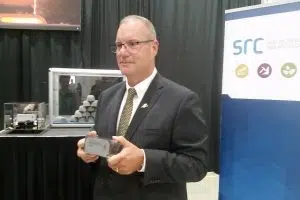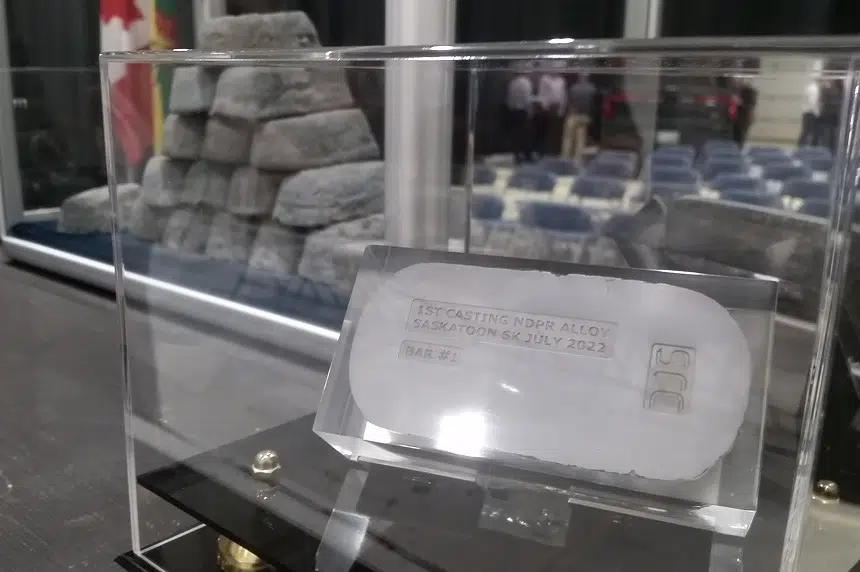Saskatchewan is poised to become a global leader in rare-earth metals, which are used in electric vehicles, laptops, cellphones, tablets and more.
On Friday, Mike Crabtree, the CEO of the Saskatchewan Research Council (SRC), presented the first ingots of rare-earth metals produced in Saskatchewan to Jeremy Harrison, the provincial minister responsible for SRC, at the research council’s new facility, which is currently under construction in Saskatoon.
“These are the first magnet metals, at scale, produced in Saskatchewan, produced in Canada, and we believe the first of this scale in North America,” Crabtree said.
“SRC is proud to play a role in positioning Saskatchewan as a world leader in rare-earth element processing and separation technologies. We can now add rare-earth magnet metals production to that list.”

Mike Crabtree, CEO of the Saskatchewan Research Council, shows off one of the first ingots produced at SRC’s Saskatoon facility. (650 CKOM)
The ingots themselves, made up of neodymium and praseodymium, hardly seemed impressive at a glance, aside from the fact they were encased in a secure glass case fitted with metal reinforcements.
But Crabtree said the ingots and others like them will help meet a growing global demand, particularly when it comes to electric vehicles.
“The demand for these important metals is expected to double by 2030,” he said. “This facility will have the capability to produce enough magnet metals to manufacture 300,000 electric vehicles a year, which is a significant piece of the North American market.”
Saskatchewan, he said, is now one of only four jurisdictions in the world that is capable of producing magnet metals at such a scale. As a result, Crabtree said mining companies can feel more confident exploring and producing rare-earth ores, because of the local supply chain being established by the SRC.
Speaking to media from a podium next to a Tesla electric vehicle, Harrison explained that rare-earth elements are commonly used in wind turbines and electric motors, meaning the elements will “play an incredibly important role in our energy security, as the world’s energy mix continues to evolve.”
The ingots on display Friday were produced during a successful test run of the facility’s smelting unit, but as construction on the Saskatoon facility continues, production will scale up to commercial levels.
“The facility will be the first of its kind in North America, and is already beginning to establish a rare-earth element supply chain right here in our province,” Harrison said.
“It’s positioning Saskatchewan as a resource developer and an export producer of environmentally sustainable rare earths, a key differentiator of Saskatchewan from other, current rare-earth-producing jurisdictions.”
Harrison said he’s confident the SRC facility and is rare-earth processing arm will create “hundreds” of jobs in the long term.











